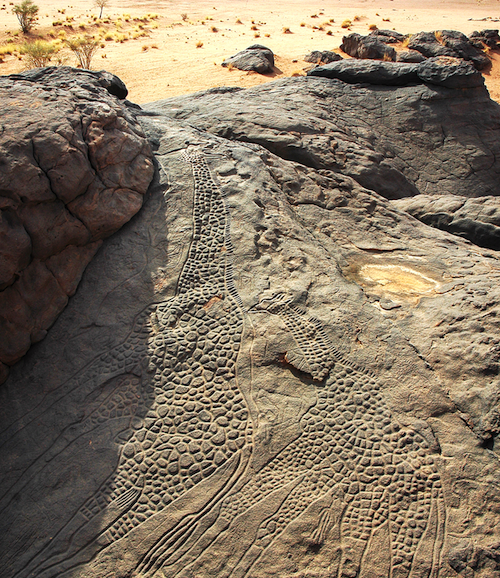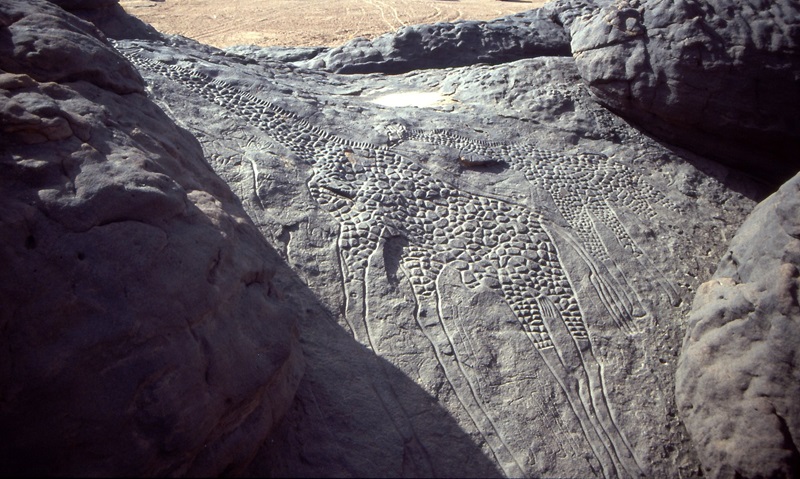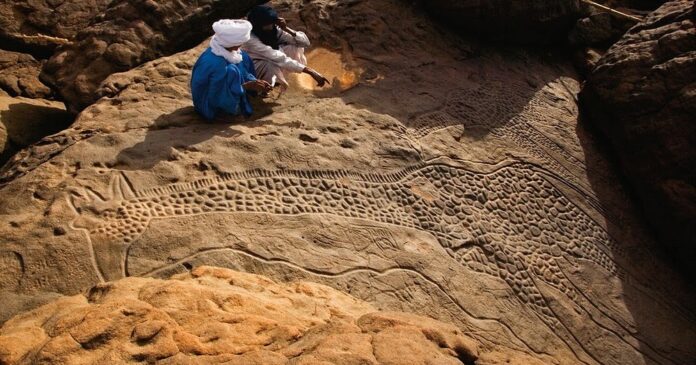The Discovery of Dabous Giraffes
In the vast expanse of the Ténéré desert, on the western side of the Aïr Mountains in north-central Niger, lie the extraordinary Dabous Giraffes petroglyphs. Discovered by French archaeologist Christian Dupuy in 1987 and later documented by David Coulson in 1997 during a photographic expedition, these carvings have captivated scholars and enthusiasts alike. Standing at a majestic height of six meters, the two giraffes—one male and the smaller one female—are the largest known animal petroglyphs in the world.

The Setting of the Petroglyphs
The giraffes are carved into a sandstone outcrop, just a few kilometers off the Trans-Saharan Highway and about 110 km north of Agadez. This location in the first foothills of the Aïr Mountains, part of the sprawling Sahara that was once a verdant savannah, offers a glimpse into a radically different historical climate. The area is not only renowned for these giraffes but also houses 828 other images, including 704 depictions of various animals like cattle, ostriches, antelopes, lions, rhinoceroses, and camels. Additionally, 61 human figures and 17 inscriptions in Tifinâgh have been found, enriching the narrative of this site’s ancient inhabitants.

Historical Context and Significance
The engravings are estimated to be between 6,000 and 8,000 years old, dating back to the African humid period when the Sahara was not the desert we know today but a lush savannah teeming with life. This period was conducive to the flourishing of fauna and flora, as evidenced by petrified wood remnants also found in the vicinity.

The detailed carvings not only depict the giraffes with remarkable accuracy but also encapsulate the biodiversity of the era, offering invaluable insights into the prehistoric ecosystem and the artistic expressions of its people.
Conservation Efforts
The preservation of these petroglyphs has become a priority due to the threat of degradation from human activity. In response, a mold was made of the giraffe carvings, and an aluminum cast of this mold is now displayed at the Agadez airport. This effort is part of broader initiatives led by organizations like the Bradshaw Foundation, dedicated to protecting and preserving such invaluable cultural heritage.

Conclusion: A Legacy Carved in Stone
The Dabous Giraffes are not only a testament to the artistic skill and environmental awareness of Neolithic peoples but also a crucial link to understanding human history in the Sahara. These carvings offer a window into a time when giraffes roamed the now arid landscapes of Niger, serving as a poignant reminder of the ever-changing nature of our planet. The continued efforts to preserve these petroglyphs ensure that this legacy remains not only in the physical landscape but also in the collective memory of humanity, inspiring future generations to appreciate and protect our shared cultural and natural heritage.




